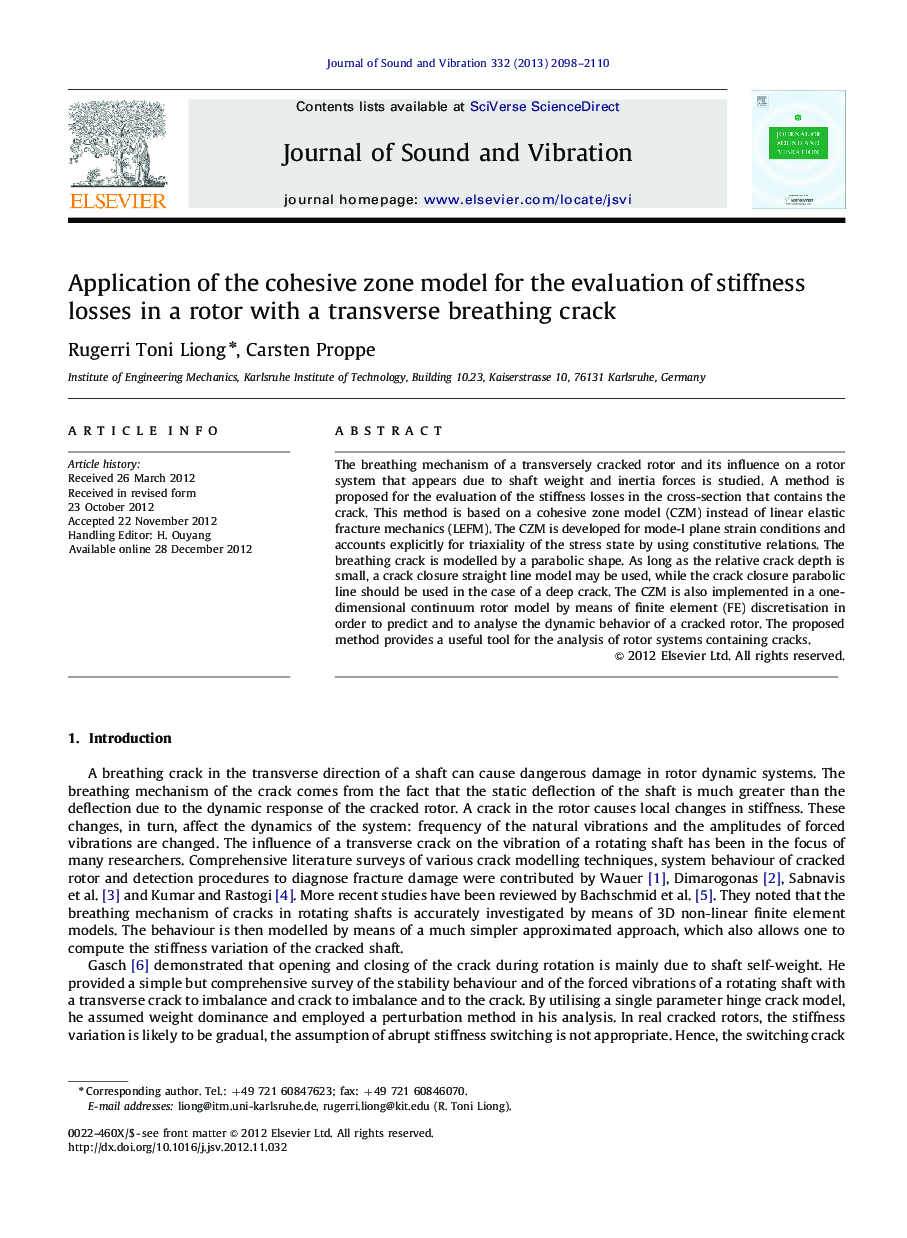| کد مقاله | کد نشریه | سال انتشار | مقاله انگلیسی | نسخه تمام متن |
|---|---|---|---|---|
| 288124 | 509606 | 2013 | 13 صفحه PDF | دانلود رایگان |

The breathing mechanism of a transversely cracked rotor and its influence on a rotor system that appears due to shaft weight and inertia forces is studied. A method is proposed for the evaluation of the stiffness losses in the cross-section that contains the crack. This method is based on a cohesive zone model (CZM) instead of linear elastic fracture mechanics (LEFM). The CZM is developed for mode-I plane strain conditions and accounts explicitly for triaxiality of the stress state by using constitutive relations. The breathing crack is modelled by a parabolic shape. As long as the relative crack depth is small, a crack closure straight line model may be used, while the crack closure parabolic line should be used in the case of a deep crack. The CZM is also implemented in a one-dimensional continuum rotor model by means of finite element (FE) discretisation in order to predict and to analyse the dynamic behavior of a cracked rotor. The proposed method provides a useful tool for the analysis of rotor systems containing cracks.
► Cohesive zone model is proposed for evaluating the stiffness losses in cracked shaft.
► Model accounts explicitly for triaxiality of the stress state.
► The breathing crack is modelled by a parabolic shape.
► Model is implemented in finite element of a one-dimensional continuum rotor model.
► The proposed method yields reasonable results for breathing cracks.
Journal: Journal of Sound and Vibration - Volume 332, Issue 8, 15 April 2013, Pages 2098–2110